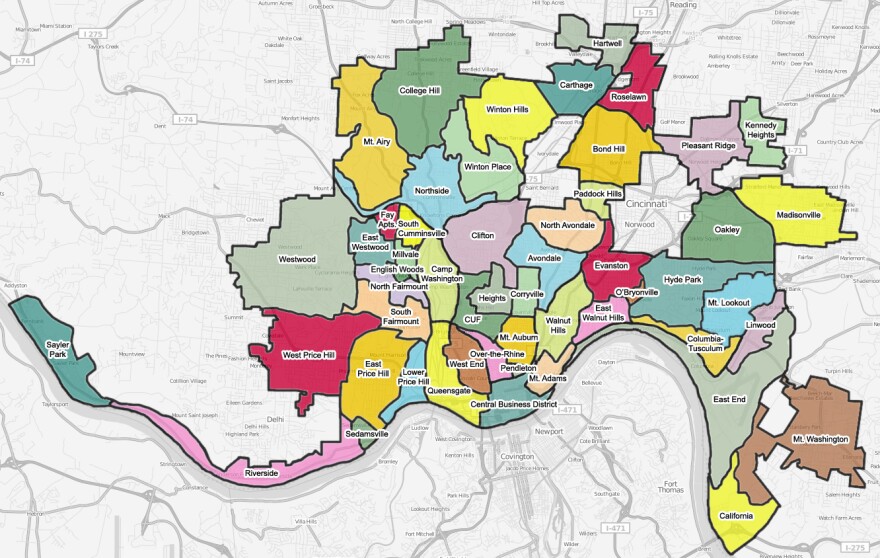Our feature OKI Wanna Know is for when you have a nagging question, and you're not sure where to turn. This week, we look at a couple of communities at the intersection of I-75 and the Norwood Lateral.
David Eide has a question that touches on geography, history, politics and civic pride. "What I want to know is how is it that Elmwood Place and St. Bernard have managed to exist as separate and independent municipalities within the boundaries of the city of Cincinnati?"
Eide says he became curious after Cincinnati's council passed an ordinance requiring mask wearing as an anti-coronavirus measure. He says he started thinking about surrounding communities and whether they would pass their own ordinances. So, he pulled out a map.
"And I happened to notice along I-75, within the boundaries of the city of Cincinnati, there were two municipalities that I'd never taken notice of before. It made me wonder how and why was it these two municipalities were able to survive and maintain their independence without being swallowed up." Eide says he knows Bexley is surrounded by Columbus, and was already aware of Norwood. But St. Bernard and Elmwood Place were new to him.
Cincinnati and other Ohio cities can't just swallow another community. Nate Ela is an assistant professor of political science and law at the University of Cincinnati, and says it's a matter of state law. The general rule is: in order for one city to annex another, voters in both communities have to approve it.
"The only time that hasn't been the case was in the early 1890s, the city of Cincinnati managed to go to Columbus to get a law passed that meant essentially the city could expand and take over neighboring villages by having one vote; all of the people in the newly combined city would vote for it or against it. And that's what led to the annexation of the villages of Clifton, Avondale, Linwood, Westwood, Riverside."
Ela says by the early 1900s, Cincinnati was looking to expand again, but the law had changed. "There was actually an attempt to annex Elmwood Place in 1912, but voters there rejected that."
That wasn't the only attempt. Marge Niesen says Cincinnati came for St. Bernard, too. "More than once. Several times. The interesting thing is they also tried to do that with several communities. At one time, I read, there were 26 communities that said 'no thanks.' "
Niesen's with the St. Bernard Ludlow Grove Historical Society. "St. Bernard even had a ballot about it on more than one occasion. There was one time when people in St. Bernard actually asked to be annexed, but Cincinnati said 'no thanks' to them."
Niesen says at least once, people in St. Bernard wanted paved streets, sidewalks and sewers, and Cincinnati wasn't willing to take on the costs. "We need modern conveniences and if you can't provide it, we'd just as soon stay independent."
That notion of independence, of self rule and self identity is important, says Ela. He says a few years ago, a study from the Manhattan Institute think tank came to the conclusion everybody would be better off and be more efficient if Norwood and Elmwood Place joined Cincinnati.
"The response from people in Norwood and Elmwood Place was 'Why don't you go think about something else? This is our city. We like our city. We feel attached to our city and we're not going to disband it because somebody from outside says that would be more efficient,' " he says. "There's definitely a sense if you grew up in a place, you become attached to that place, you feel invested in having the ability to control the rules and laws that apply to your city."
There's a feeling you know who's who. Rob Clark says he gets that in St. Bernard. He and his wife moved there in 2013. "It feels good knowing the police officer lives next door, and the fireman across the street. It's got that nice Main Street feel but still right in the middle of everything."
He says he gets the sense his neighbors are proud of their community and even today don't want to be absorbed.
If you have an offbeat question for OKI Wanna Know, ask it here or fill out the form below and we may answer it.



